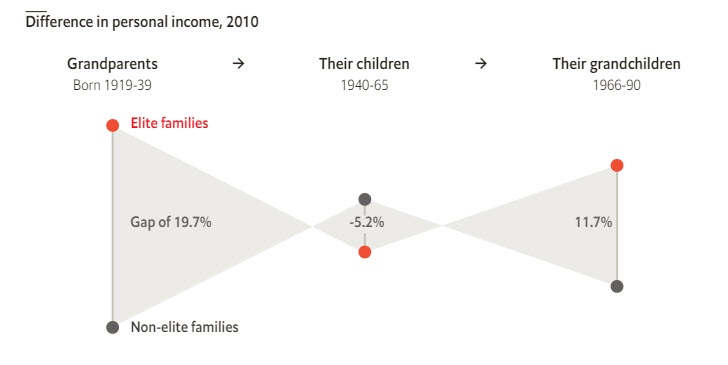The Cream Rises to the Top
NBER: Can efforts to eradicate inequality in wealth and education eliminate intergenerational persistence of socioeconomic status? The Chinese Communist Revolution and Cultural Revolution aimed to do exactly that. Using newly digitized archival records and contemporary census and household survey data, we show that the revolutions were effective in homogenizing the population economically in the short run. However, the pattern of inequality that characterized the pre-revolution generation re-emerges today. Almost half a century after the revolutions, individuals whose grandparents belonged to the pre-revolution elite earn 16 percent more income and have completed more than 11 percent additional years of schooling than those from non-elite households. We find evidence that human capital (such as knowledge, skills, and values) has been transmitted within the families, and the social capital embodied in kinship networks has survived the revolutions. These channels allow the pre-revolution elite to rebound after the revolutions, and their socioeconomic status persists despite one of the most aggressive attempts to eliminate differences in the population.
That’s the abstract of Persistence Despite Revolutions one of Alberto Alesina’s last papers (with

Hat tip: The excellent Stefan Schubert.